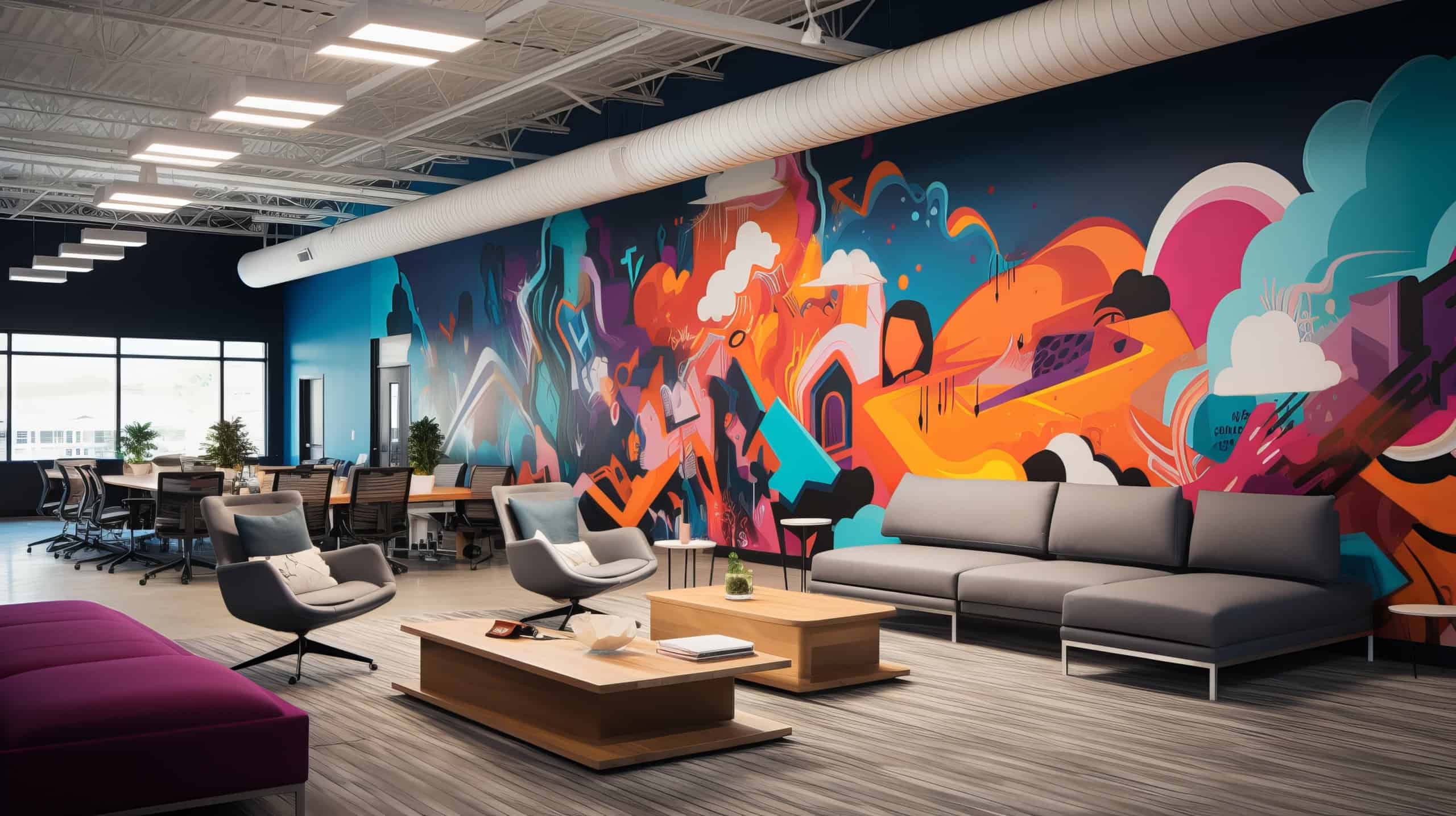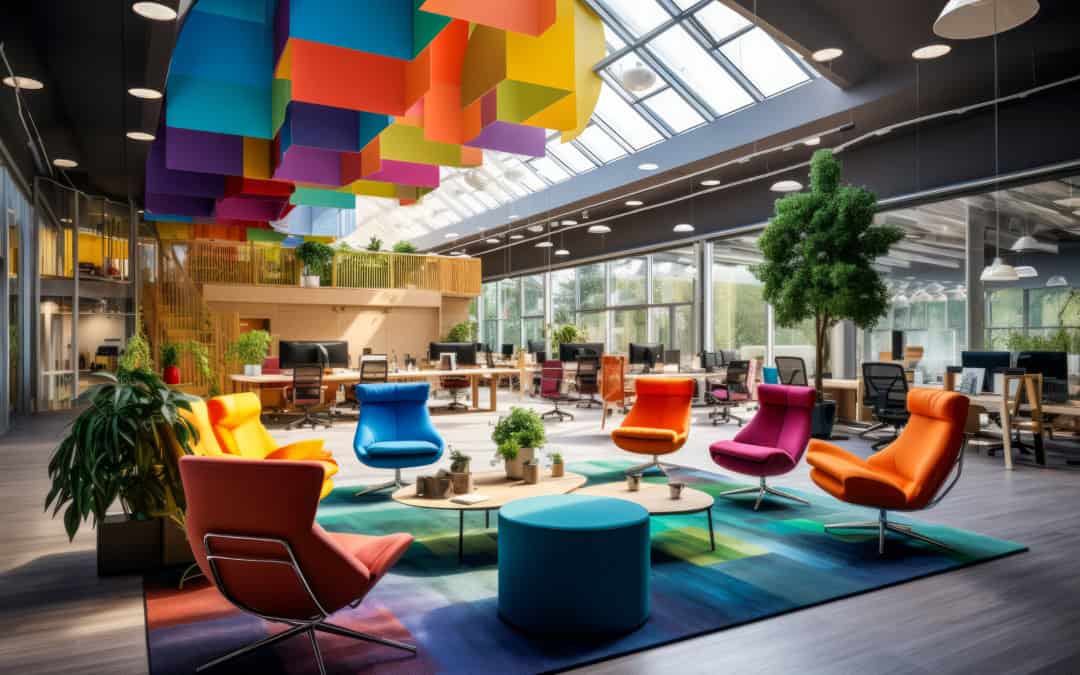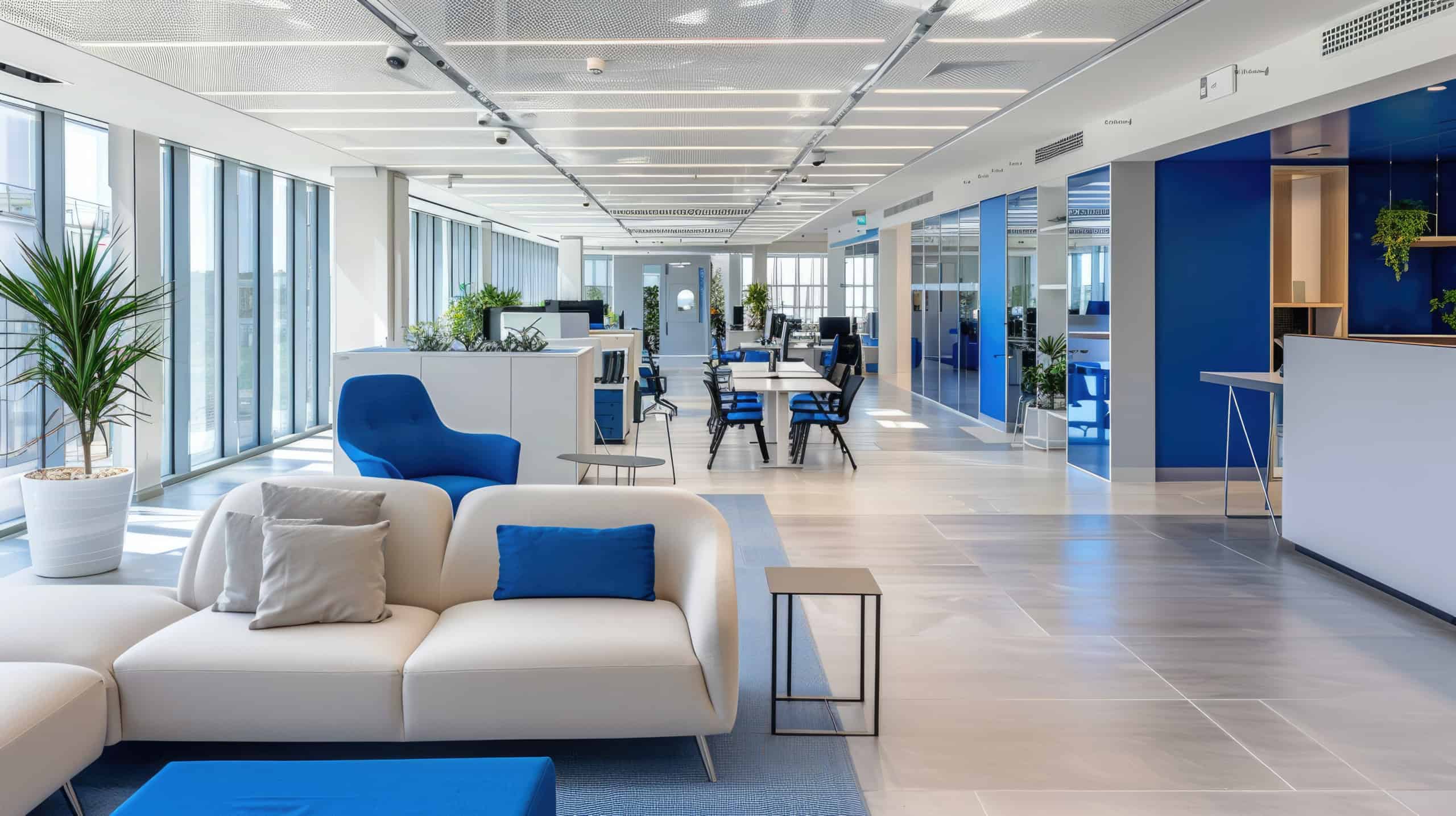2025 Guide to Interior Office Design, Important Tips, and Lasting Trends
Designing an office is no small undertaking. In just the past few years, the role of the office has changed significantly as many people now work from home at least part of the time. As a result, the hybrid workplace has become the new standard. Alongside the evolving role of the office, commercial office space layout and interior design techniques have also changed. This guide identifies important tips, trends, and best practices to consider before your next office design project.
If you are looking for Office Design Services, please reach out for a free consultation from one of the experts at Joyce Contract Interiors.

What is commercial office design?
Commercial office design is the combined process of creating a functional floor plan and an aesthetically pleasing interior design that meet the needs of both the company and its employees. A functional floor plan will optimize space allocation for the business’s needs overall, from broader functional needs and department-based considerations to the needs of individual employees. Laying out a floor plan includes the placement of workstations, private offices, and common areas, such as meeting rooms and collaborative spaces. The ultimate goals are to ensure that the office furniture looks professional and allows employees to be comfortable and productive. Contract furniture dealers make great commercial office design partners due to their knowledge of office furniture.
What is commercial interior design?
Commercial interior design overlaps with the definition of commercial office design, but interior design has a bigger focus on aesthetics and, perhaps, less focus on functionality and specific office furniture. Interior designers help strengthen the brand element and add pizzazz to the office decor using color schemes, decals, artwork, plants, accent furniture, and much more. Contract office furniture dealers and interior designers often partner on projects to leverage each other’s expertise and to ensure a balance of functionality and presentation.
Commercial Office Design Top Considerations
Designing Office Floor Plans
Pivoting to hybrid floor plans
If you were designing an office five years ago, you’d likely debate the pros and cons of an open office floor plan against a cubicle-based plan. Today, those floor plans are somewhat outdated, as they typically don’t meet the needs of the modern hybrid workforce. The hybrid office floor plan is more nuanced and leans into concepts like flexibility, multipurpose zones, modular furniture, collaborative spaces, and comfortable resimercial and “loungy” furniture.
Emphasize comfort
When employees are used to working in their comfortable homes, offices with bright artificial fluorescent lights, wall-to-wall cubicles, and rigid meeting-room chairs are being replaced. People come into the office to socialize and collaborate, so why not make the office feel more comfortable? Enter resimercial aesthetics for office furniture and decor. Design your space around cozy couches and other ergonomic furniture, lots of natural light, as many plants as possible, and other features that make your talent feel like they are in the comfort of their homes. Prioritizing some comforts is a worthy investment.
Multipurpose zones
The hybrid office must do more with less. When work-from-home schedules left offices with so many empty workstations, businesses realized that fewer workstations were needed, and that space could be repurposed into more collaborative area. Rethinking the floor plan, zones can be created for collaboration and for employees to get independent work done, too. When furniture is arranged in a collaboration-friendly layout, these multipurpose zones can help businesses meet the evolving needs of the modern collaboration-centric office.

Flexible modular furniture
One lesson from the pandemic is to expect the unexpected and be prepared for it! The business needs for an office redesign project in 2025 may not necessarily meet the business needs of 2026 and beyond. Modular office furniture provides flexibility to rearrange a floor plan as needed if and when that is necessary. Will people start coming back to the office more down the road, requiring more individual workstations? Or will the office continue to move in the direction of a place where people come to socialize and collaborate? Make sure your furniture can adapt for a range of uses and seating needs.



